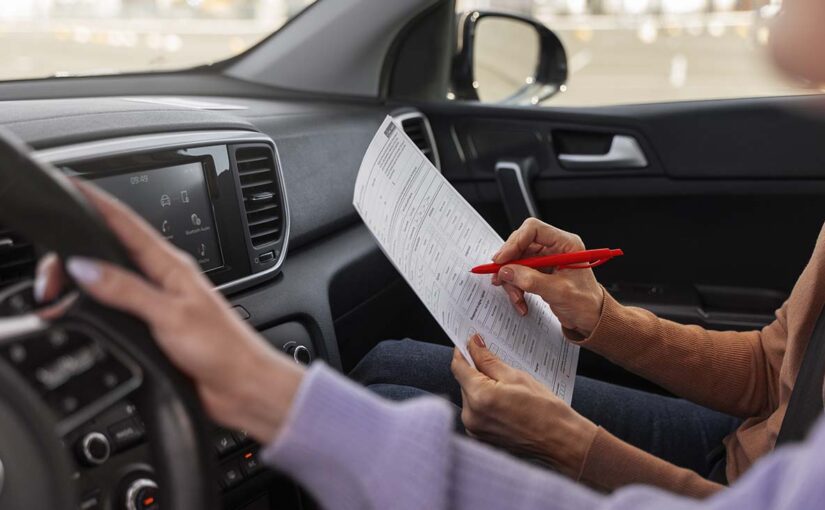In the ever-changing landscape of Arizona’s roadways, mastering defensive driving techniques is not just an asset, it’s a necessity. From the bustling streets of Phoenix to the open highways stretching through the desert, knowing how to anticipate and safely respond to potential hazards can mean the difference between a routine commute and a perilous situation. In this guide, we delve into the fundamentals of defensive driving tailored for the unique conditions Arizona drivers face, providing you with the knowledge to navigate the roads with confidence and caution. Whether you are a seasoned driver or new to Arizona’s highways, these strategies will enhance your driving skills and contribute to a safer driving community.
Maintaining Safe Following Distances
Explanation of the 3-Second Rule and Its Application
One of the cornerstone principles of defensive driving is the 3-second rule. This rule helps drivers maintain a safe following distance from the vehicle ahead, providing ample time to react to sudden stops or changes in traffic conditions. To apply the 3-second rule, simply mark a fixed point on the road ahead—such as a sign or tree. As the rear bumper of the vehicle in front of you passes that point, begin counting. If it takes you less than 3 seconds to reach the same marker, you’re following too closely and should increase your distance. This simple yet effective strategy is especially helpful in the dynamic traffic flows found in Arizona cities and can drastically reduce the risk of rear-end collisions.
Adaptive Following Distance in Adverse Weather Conditions
In the case of adverse weather conditions, which can be quite common in Arizona during monsoon season or in northern areas where winter hazards prevail, the basic 3-second rule may not provide sufficient time for a safe stop. Factors such as reduced visibility, slick roads, and increased stopping distances due to wet or icy surfaces necessitate an adaptive approach to following distances. It is advisable to double or even triple the standard following interval under these conditions. By expanding the gap between you and the car ahead, you allow for more reaction time and a safer braking distance, thereby significantly improving road safety for everyone involved.
Awareness of Surroundings
Use of Mirrors and Blind Spot Checks
Regular and correct use of a vehicle’s mirrors is an integral part of defensive driving. Arizona drivers should habitually check their rearview and side mirrors every 5 to 8 seconds to gain a full perspective of the area surrounding their vehicle. Despite this, mirrors have their limitations, and there exist areas that mirrors can’t cover, known as blind spots. Before changing lanes or making turns, it’s critical to perform a blind spot check by quickly glancing over your shoulder to ensure that the path is clear. Blind spot checks are particularly important on multi-lane roads, such as those found in metropolitan Phoenix and Tucson, where there is a higher concentration of vehicles.
Vigilance in High-Traffic Areas, Intersections, and Parking Lots
Increased vigilance is crucial in high-traffic areas, near intersections, and in parking lots where the flow of vehicles and pedestrians is most dense and unpredictable. Drivers must be attentive to the potential for sudden stops, pedestrians crossing, and drivers who may not adhere to traffic signs or signals. At intersections, even if you have the right of way, it’s wise to anticipate the actions of others, looking left and right before proceeding through on a green light. In parking lots, where children and shopping carts often appear unexpectedly, slow speeds and heightened awareness are paramount for preventing mishaps. By being observant and prepared to respond to the unexpected, drivers can vastly improve their chances of avoiding accidents in these bustling environments.
Adapting to Arizona’s Extreme Weather
Handling Monsoons, Dust Storms, and Flash Floods
Arizona’s weather can be extreme, and monsoons, dust storms, and flash floods represent significant hazards to drivers. During monsoon season, it is imperative to stay alert for sudden torrential rains which can lead to limited visibility and dangerous road conditions. To handle these challenges, slow down to maintain control of the vehicle, turn on your headlights for better visibility, and if necessary, pull over to a safe spot away from trees and power lines until visibility improves. In dust storms, always reduce speed gradually and avoid stopping on the roadway. Activate your hazard lights to make your vehicle more visible to others. Be especially cautious around flash flood zones; never attempt to cross a flooded roadway as the water’s depth and flow rate can be deceiving, and it takes only a small amount of water to sweep a car away.
Strategies for Driving in Intense Heat and Sun Glare
The intense heat and sun glare in Arizona also pose unique challenges to drivers. Protect your vehicle’s interior and keep it cool by using sunshades and parking in shaded areas whenever possible. Ensure your car’s cooling system is well-maintained to prevent overheating, and always have a supply of water in case of emergency. Sun glare, particularly during sunrise and sunset, can be quite blinding. Utilize your sun visor, wear polarized sunglasses to reduce glare, and maintain a clean windshield to improve visibility. Be aware that the heat can affect tire pressure, so regularly check and adjust your tire pressure to match the manufacturer’s recommended levels. These strategies help ensure vehicle reliability and your personal comfort, reducing the risk of heat-induced fatigue while driving.

